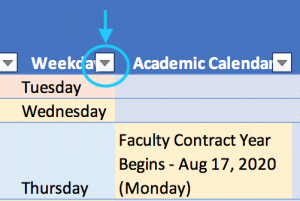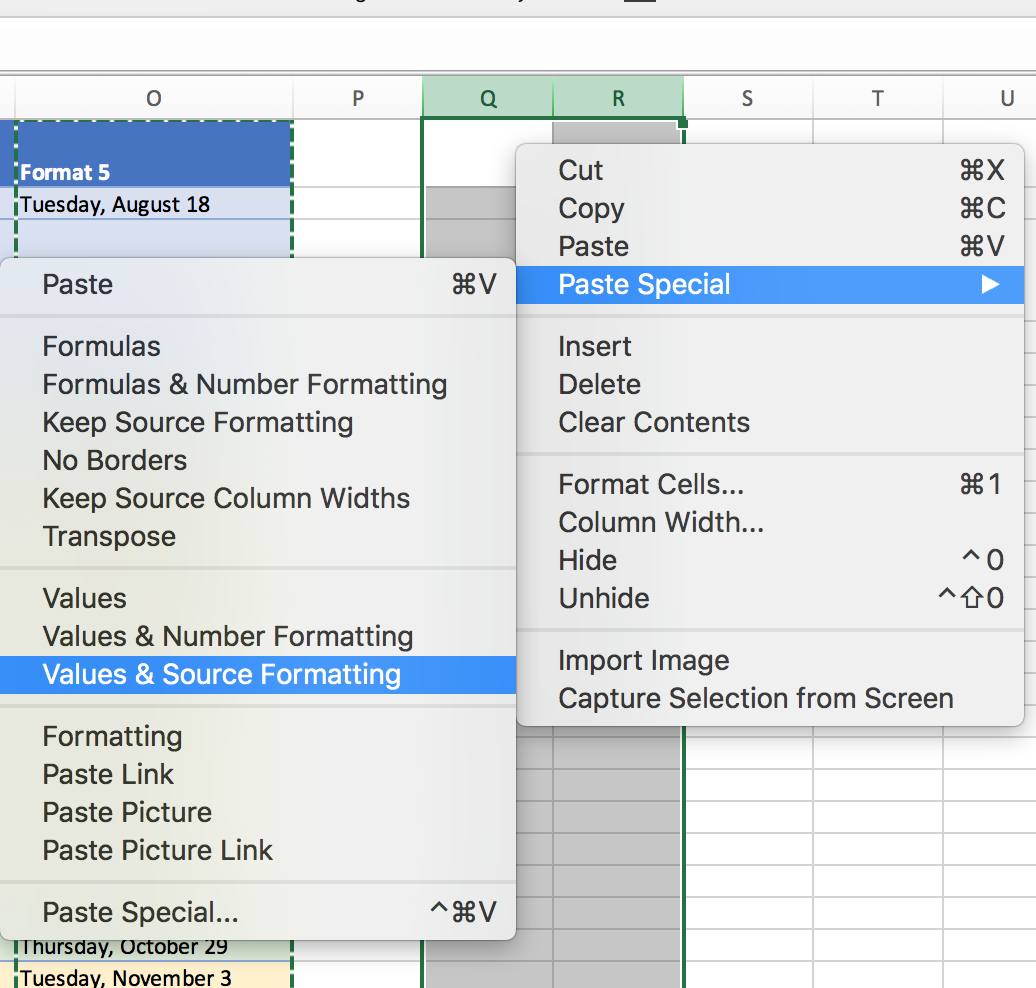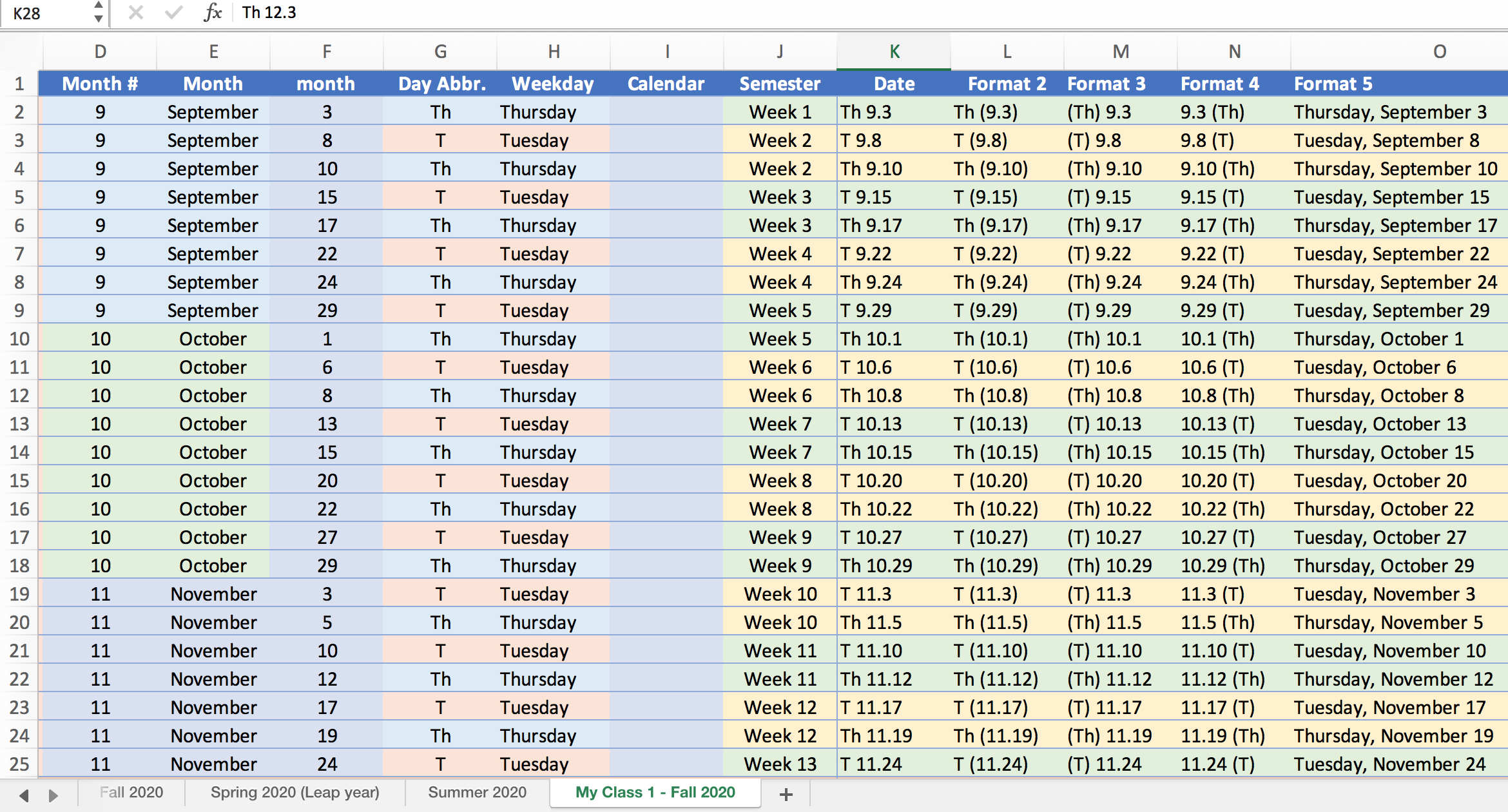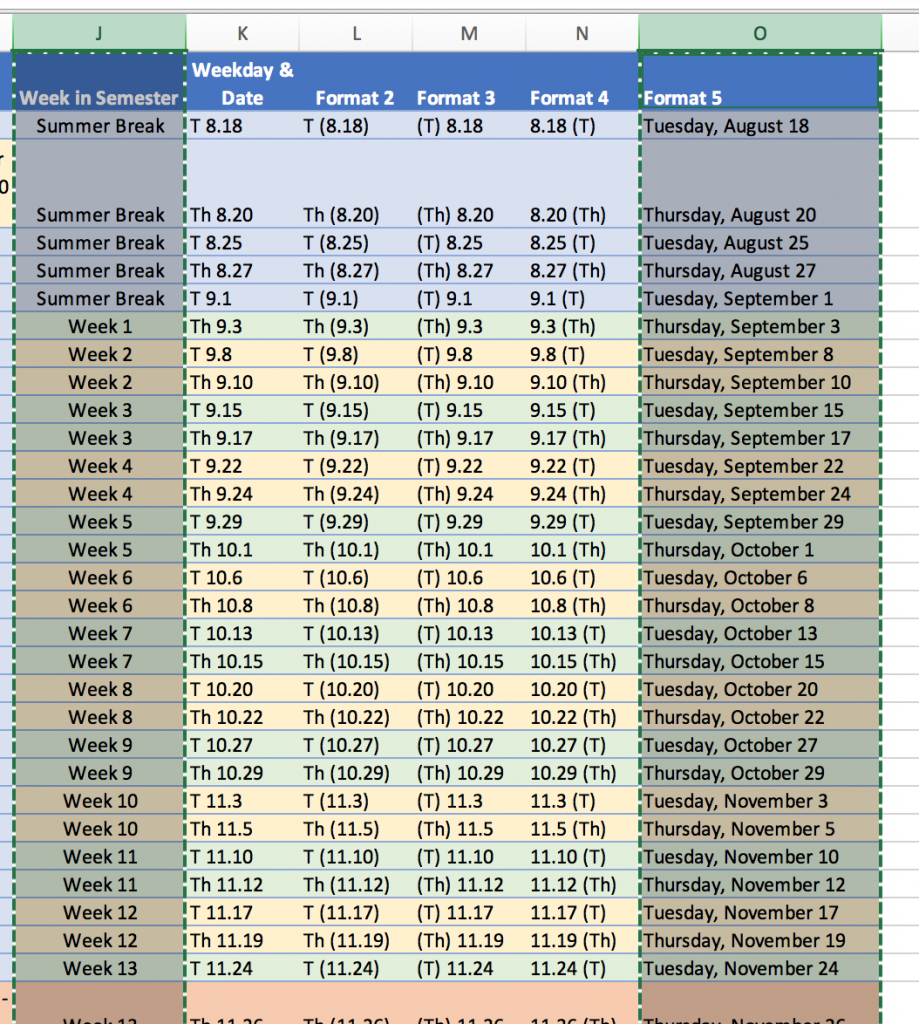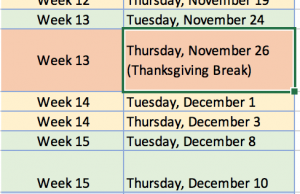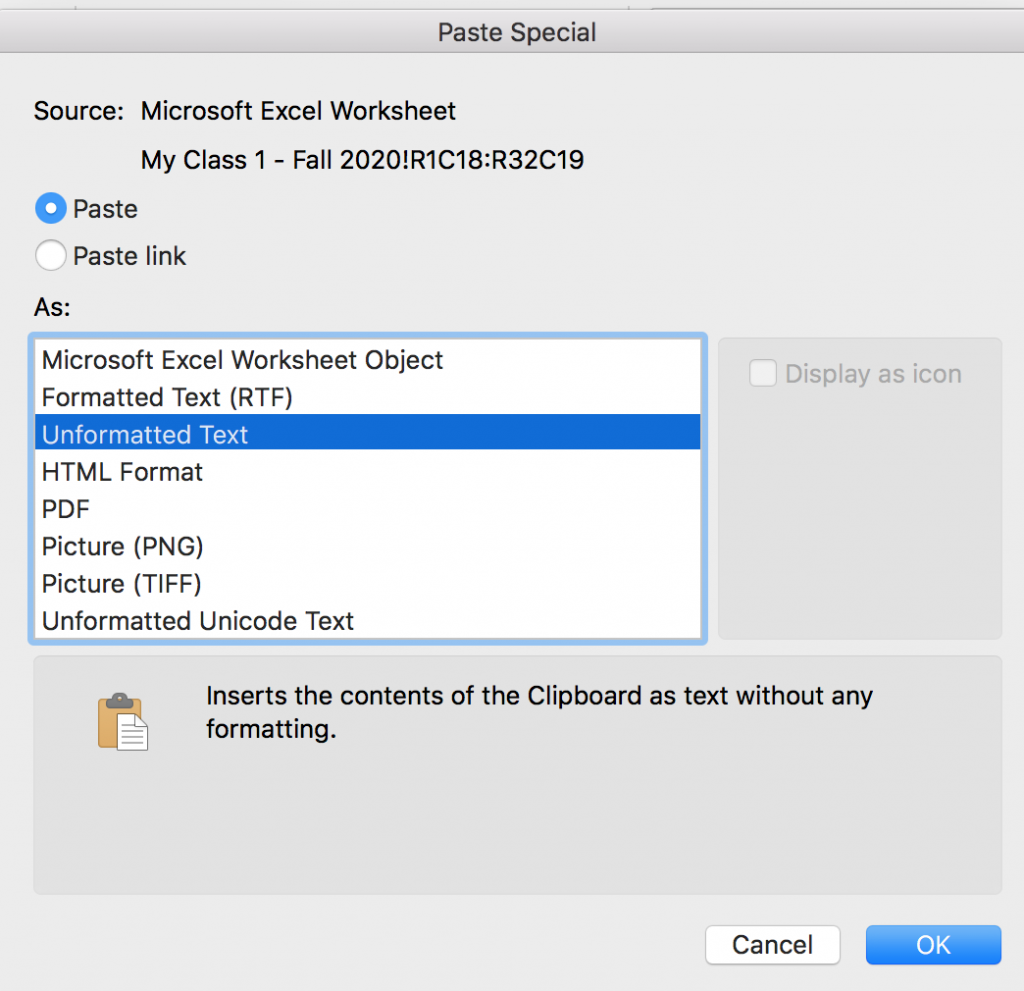UW-Madison Course Meeting Dates Table
For many instructors, the process of outlining course calendars each semester feels like a finicky chore. This tool can serve as a shortcut for copying out class meeting dates and weekday information in a course calendar document prior to entering information about lecture topics and reading assignments.
For example, the screenshot below shows a Word document course calendar in the early stages of development. I’ve used this meeting dates tool to quickly copy-paste course dates and weekday information into the page in one fell swoop. From there, I’ve begun to add more specific information about weekly topics and readings.
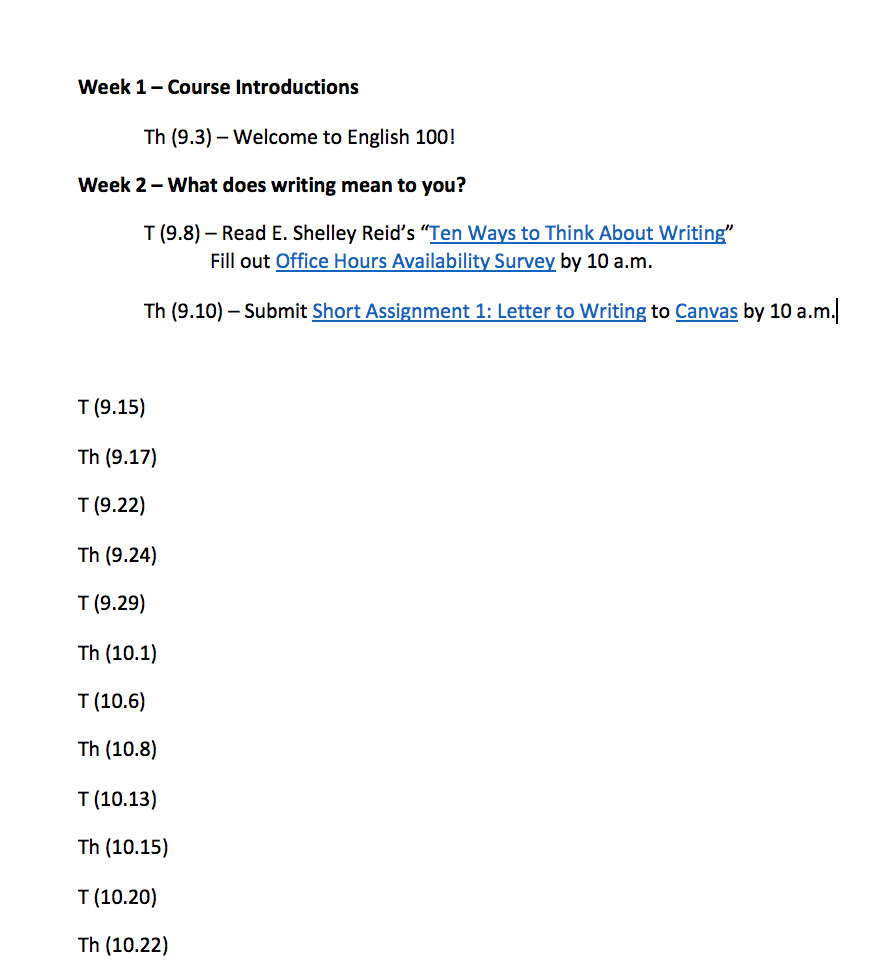
How to use this tool
You can download the spreadsheet file by navigating to this Google Drive folder.
You will need to download the Excel version of the table rather than opening it in Google Sheets.
Once you’ve downloaded and opened the file, you’ll see a screen that looks roughly like the image below. The spreadsheet tabs at the bottom of the page allow you to toggle between semesters.
The calendar information appears in the left-hand columns. The columns on the far right contain different ways of formatting calendar information in a course schedule. (How does this work? An Excel concatenate function sends information from the left-hand columns into the right-hand columns.)
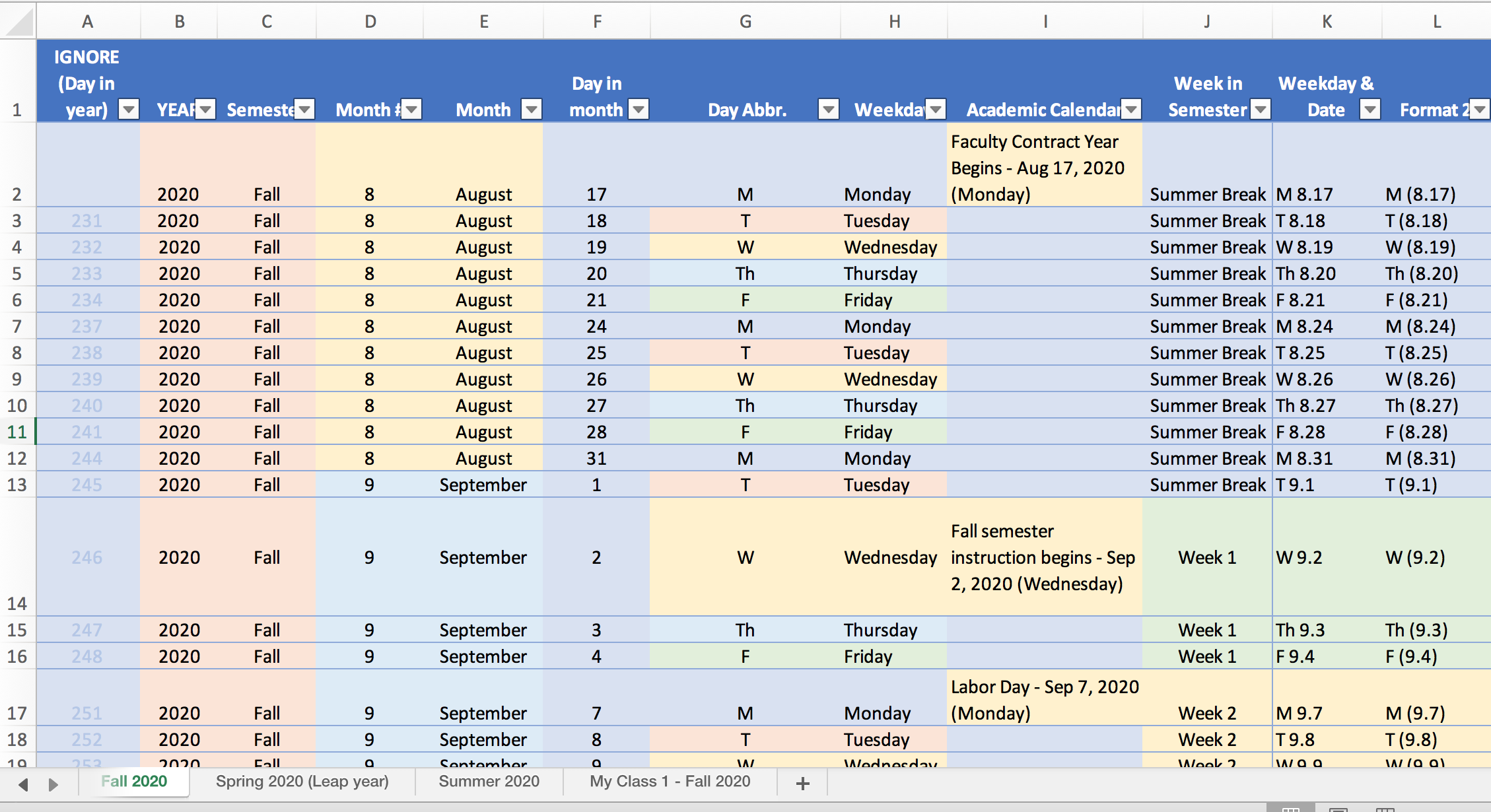
Step 1: Use the weekday filter to display only the weekdays when your course meets.
When you click the dropdown triangle next to “Weekday,” you’ll see the option to select all days or only some days of the week. When click the checkboxes next to the days when your course is scheduled, the table should automatically display only those days of the week.
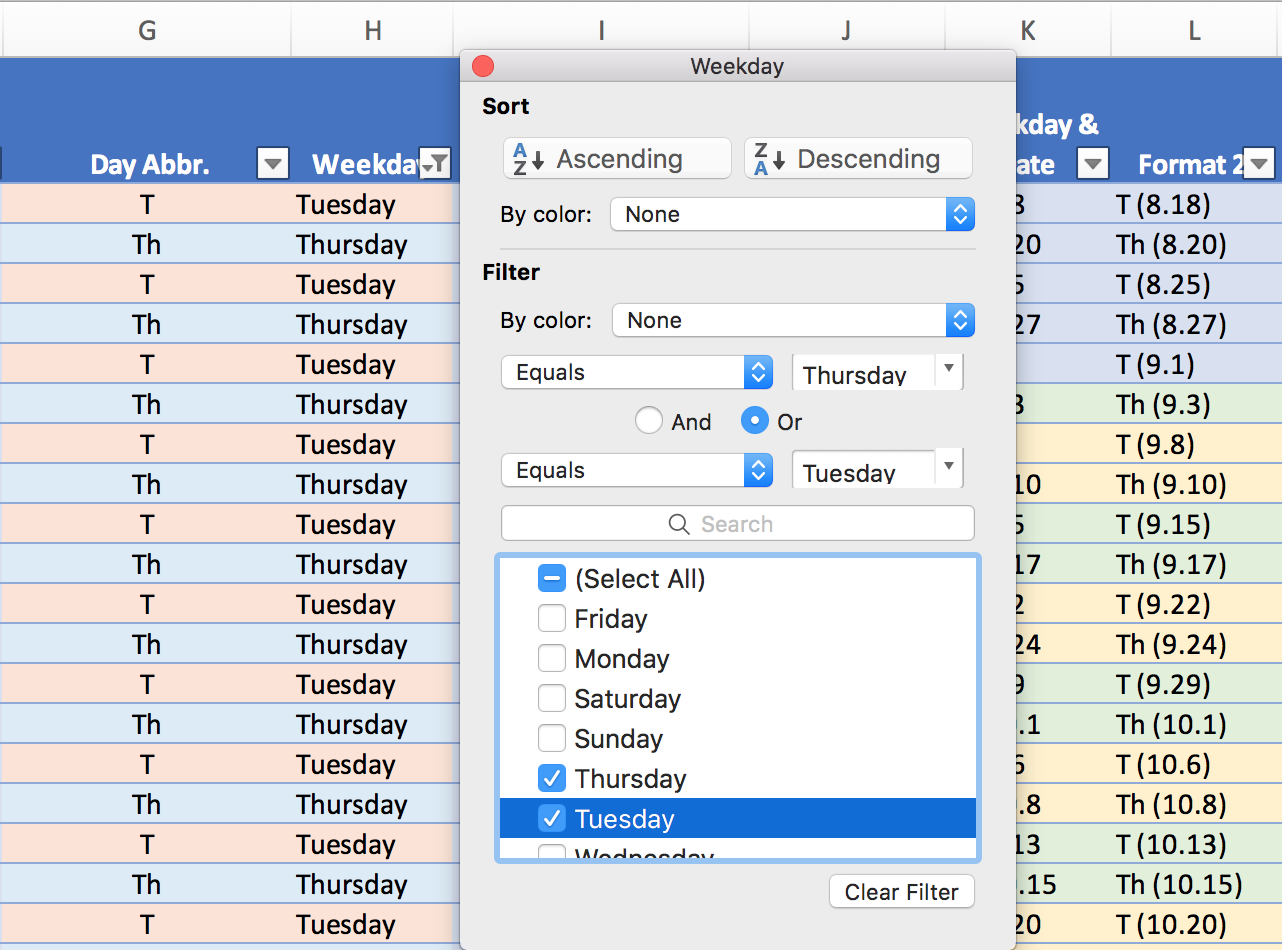
Step 2: Copy the visible table items to a different spreadsheet in Excel.
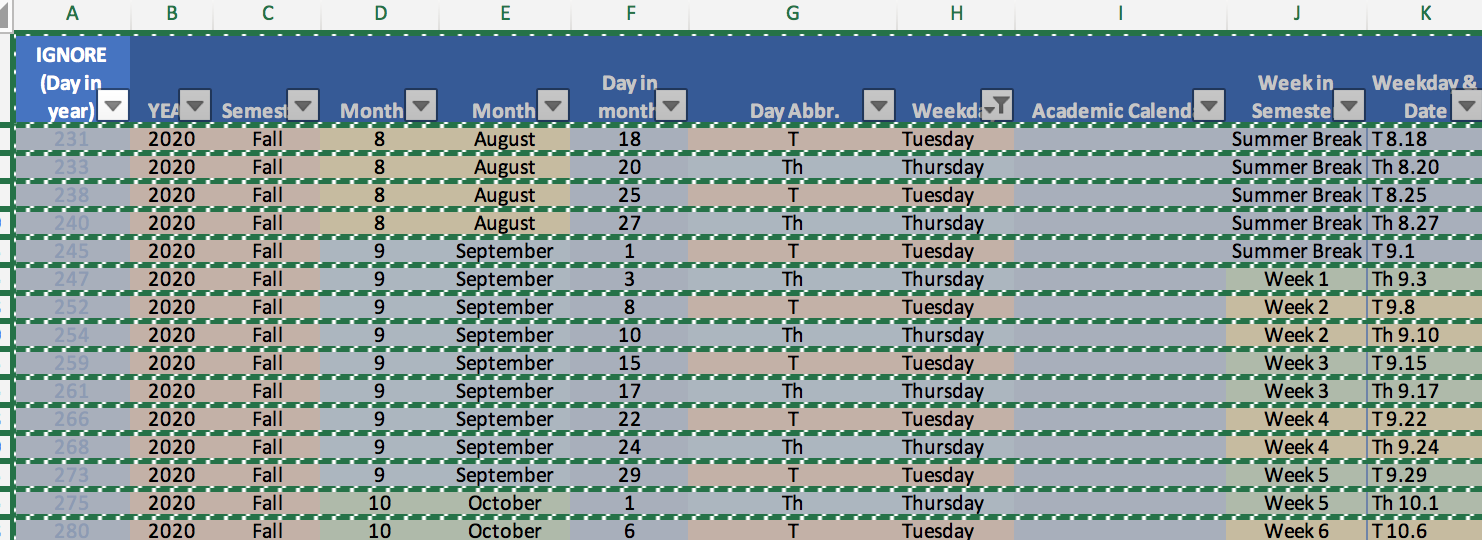
I recommend using the “Paste Special > Values & Source Formatting” option when you paste this information into a new table. This is because the original table uses functions to populate its different weekday/date formats. Pasting this table’s values rather than preserving the functions will allow you to manipulate the table without worrying about disrupting a function and losing the date display. Pasting formatting will allow you to preserve the table’s colors in the short term, making it easier to identify when breaks occur.
If you have a preferred weekday/date view, you can also paste this on its own rather than duplicating the table as a whole.
In the image below, for example, I’ve chosen to paste the “Week in Semester” column and the “Format 5” column. (To select multiple columns at once, you can hold down the Mac “Command” button or the Microsoft “Control” button.) Here again, I’ve clicked “Paste special > Values & source formatting” to make it easier for me to modify the table information.
Note: If there’s a date format that you’d like to include in your syllabus but that doesn’t appear in the columns on this document, you can create your own auto-filled column by using Excel’s CONCAT function to string together a custom arrangement based on the date/weekday information on the existing spreadsheet.
Before you get rid of the cell coloring, consider adding relevant information to significant calendar dates. (Below, the bright orange color of the cells is a reminder that November 26th occurs during Thanksgiving Break.)
Step 3: Paste in the text editor of your choice.
You can paste either formatted text (which–in Microsoft Word, at least, will preserve the table cells and coloring) or unformatted text, which will give you text only.
From there, you can fill in course information as you please.
A caveat:
I’ve made an effort to verify the date and academic calendar alignment in these spreadsheets, but I strongly encourage you to double-check that the dates and academic calendar information you’ve copied into your own course calendar are correct!
If you notice any issues in the original document, please contact me at my Wisc address (nsalmon) and I will correct the source table for everyone.

